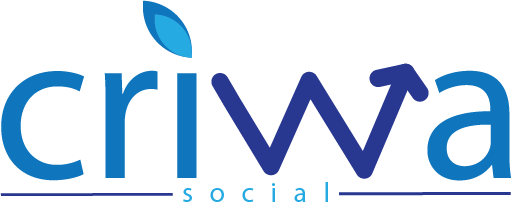Veterinary Rehabilitation Services Industry | Forecast 2030
Grand View Research’s veterinary rehabilitation services industry data book is a collection of market sizing information & forecasts, regulatory data, competitive benchmarking analyses, macro-environmental analyses, and technological framework studies. Within the purview of the database, all such information is systematically analyzed and provided in the form of presentations and detailed outlook reports on individual areas of research.
The global market size for veterinary rehabilitation services (companion, livestock, & wildlife) was estimated at USD 792.4 million in 2022 and is anticipated to increase at a CAGR of 11.69% from 2023 to 2030. Veterinary rehabilitation is a non-invasive physical therapy that is performed on animal patients to recover from injuries, post-surgeries, and diseases such as neurologic, orthopedic, and other chronic illnesses. Physical rehabilitation services have helped several animals to restore regular mobility, function, and quality of life.
Access the Global Veterinary Rehabilitation Services Industry Data Book, 2023 to 2030, compiled with details like market sizing information & forecasts, trade data, pricing intelligence, competitive benchmarking, macro-environmental analyses, and regulatory & technological framework studies
Some basic tasks of trained veterinary rehabilitators include:
- Initial assessments with the review of medical imaging & patient records
- General examination
- Detailed evaluation of musculoskeletal & neurological conditions
- Advanced diagnostic procedures if required.
- Arranging the therapeutic plans
- Pain management medications & services
- Home-exercise prescriptions
- Discussion on prognostic measures
- Regular communication with referring veterinarians & patient owners
The increasing prevalence of orthopedic & musculoskeletal disorders among animals, the growing adoption & ownership rates of companion animals coupled with pet humanization trends, and growing awareness among pet owners regarding drug-free & non-invasive rehab treatment are some of the key factors driving this market.
According to the American Animal Hospital Association, the major benefits of veterinary rehabilitation services include reduced inflammation and pain, increased mobility, improved coordination & balance, normal movement & muscle mass restoration, enhanced muscular strength, and overall improvement in quality of life.
Furthermore, the resumption of vet rehab services post-pandemic, the growing adoption of pet insurance that also covers rehabilitation services & treatments, expansion in the number of vet rehab centers & practitioners, and increased pet care expenditure are some of the other factors driving the market. American Pet Products Association (APPA) reported in its 2023 report that the pet care expenditure in the U.S. raised to reach 136.8 billion in 2022 from USD 90.5 billion in 2018. Hence, the constantly increasing year-on-year pet healthcare expenditure is one of the major factors driving the market growth.
Order your copy of the Free Sample of “Veterinary Rehabilitation Services Industry Data Book – Companion Animal, Livestock, Wildlife Animal Market Size, Share, Trends Analysis, And Segment Forecasts, 2023 – 2030
Wildlife Animal Rehabilitation Services Insights
The global companion animal rehabilitation services market size was valued at USD 499.7 million in 2022 and is anticipated to expand at a compound annual growth rate (CAGR) 11.42% from 2023 to 2030. The growing awareness among veterinarians & pet parents regarding physical rehab therapies as a drug-free & non-invasive treatment for companion animals, improving trends of pet humanization, and increasing incidence of orthopedic & musculoskeletal problems coupled with respective surgery rates, are some of the key factors driving the market. In addition, the increasing number of organizations recruiting volunteer animal rehabilitators is further boosting the market growth. For instance, ‘our companion-animal rescue & sanctuary organization’ in the U.S. offers two different ways for the general public to volunteer in rehabilitating stray companion animals.
The COVID-19 pandemic has negatively impacted the market, majorly in the year 2020. This impact was brought on by the announcement of nationwide & statewide lockdown, which led to movement restrictions and the closure of vet rehabilitation centers. It created hurdles among veterinarians, rehabilitators, and pet parents in accessing physical therapies for their beloved animals owing to the forced cancellation of rehab programs. Moreover, the pandemic also created a looming recession and increased price rates for rehabilitation services, which affected the decisions of pet parents in choosing rehabilitation therapies.
The pandemic has also had a positive impact on the market, such as an increased pet adoption rates globally. For instance, according to an article published by the National Library of Medicine in September 2021, animal rescue & shelter homes worldwide have experienced ever-increasing foster care & adoption rates during the pandemic. In addition, the U.S. CDC, in collaboration with American Veterinary Medical Association, developed guidelines for shelter homes to help continue operating and protect the health of animals during the period of the massive health crisis. Therefore, the COVID-19 pandemic has impacted the exiting and entering of animals in shelter homes and rescue centers, relevantly affecting rehabilitation services.
Livestock Animal Rehabilitation Services Market Insights
The global livestock animal rehabilitation services market size was valued at USD 151.93 million in 2022 and is expected to expand at a compound annual growth rate (CAGR) of 11.87% from 2023 to 2030. The market is primarily driven by the rising livestock population in developing countries, growing awareness about the benefits of rehabilitation modalities in livestock treatments, and increasing adoption of physical therapy among injured farm animals to accelerate healing. In addition, government-sponsored livestock rehabilitation organizations and foundations are increasing in developing regions, which further propels the growth of the market.


